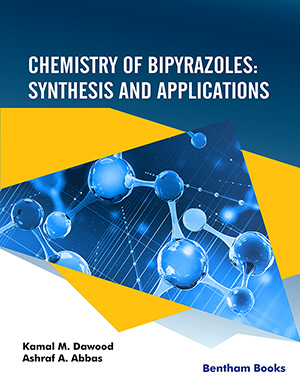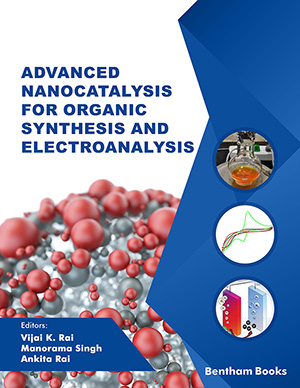
Abstract
In nature, flavonoids constitute a relatively diverse family of aromatic molecules such as flavones, flavonols, flavanones, isoflavone, chalcones, and their derivatives. Natural and synthetic flavonoids have reported diverse biological activity including antimycobacterial, antimicrobial, antiproliferative, antiarrhythmic, antiviral, antihypertensive, antioxidant, and anti-inflammatory. Flavonoids have garnered much attention as potential targets for nutraceuticals and pharmaceuticals. The recent development of ‘‘Green Chemistry’’ has enabled us to manipulate biosynthetic pathways to generate a library of synthetic flavonoids and to diminish the hazards for human health and environmental pollution from conventional methods. This paper presents an exhaustive review of the green synthesis of flavonoids. Green chemistry is the need for the day; hence chalcones can be synthesized in an eco-friendly manner without using solvents. The chalcone synthesis involves the solvent-free solid-state trituration between acetophenone derivatives and substituted benzaldehydes in the presence of NaOH/KOH as a base (Claisen-Schmidt reaction). Using these chalcone derivatives, synthesis of flavonoids can be done. In the pharmaceutical arena, economical bulk production of different types of flavonoids has been successfully established by green chemistry techniques.
Keywords: Green synthesis, flavonoids, chalcones, microwave irradiation, grinding, Claisen-Schmidt condensation.
Current Organic Chemistry
Title:Green Chemistry Approaches to the Synthesis of Flavonoids
Volume: 25 Issue: 17
Author(s): Yogesh Murti*, Devender Pathak and Kamla Pathak
Affiliation:
- Institute of Pharmaceutical Research, GLA University Mathura, 281406, Uttar Pradesh,India
Keywords: Green synthesis, flavonoids, chalcones, microwave irradiation, grinding, Claisen-Schmidt condensation.
Abstract: In nature, flavonoids constitute a relatively diverse family of aromatic molecules such as flavones, flavonols, flavanones, isoflavone, chalcones, and their derivatives. Natural and synthetic flavonoids have reported diverse biological activity including antimycobacterial, antimicrobial, antiproliferative, antiarrhythmic, antiviral, antihypertensive, antioxidant, and anti-inflammatory. Flavonoids have garnered much attention as potential targets for nutraceuticals and pharmaceuticals. The recent development of ‘‘Green Chemistry’’ has enabled us to manipulate biosynthetic pathways to generate a library of synthetic flavonoids and to diminish the hazards for human health and environmental pollution from conventional methods. This paper presents an exhaustive review of the green synthesis of flavonoids. Green chemistry is the need for the day; hence chalcones can be synthesized in an eco-friendly manner without using solvents. The chalcone synthesis involves the solvent-free solid-state trituration between acetophenone derivatives and substituted benzaldehydes in the presence of NaOH/KOH as a base (Claisen-Schmidt reaction). Using these chalcone derivatives, synthesis of flavonoids can be done. In the pharmaceutical arena, economical bulk production of different types of flavonoids has been successfully established by green chemistry techniques.
Export Options
About this article
Cite this article as:
Murti Yogesh *, Pathak Devender and Pathak Kamla , Green Chemistry Approaches to the Synthesis of Flavonoids, Current Organic Chemistry 2021; 25 (17) . https://dx.doi.org/10.2174/1385272825666210728095624
| DOI https://dx.doi.org/10.2174/1385272825666210728095624 |
Print ISSN 1385-2728 |
| Publisher Name Bentham Science Publisher |
Online ISSN 1875-5348 |
Call for Papers in Thematic Issues
Advances of Heterocyclic Chemistry with Pesticide Activity
Global food safety and security will continue to be a global concern for the next 50 years and beyond. Plant diseases have had a significant impact on food safety and security throughout the entire food chain, from primary production to consumption. While conventional chemical pesticides have been traditionally used for ...read more
Carbohydrates conversion in biofuels and bioproducts
Biomass pretreatment, hydrolysis, and saccharification of carbohydrates, and sugars bioconversion in biofuels and bioproducts within a biorefinery framework. Carbohydrates derived from woody biomass, agricultural wastes, algae, sewage sludge, or any other lignocellulosic feedstock are included in this issue. Simulation, techno-economic analysis, and life cycle analysis of a biorefinery process are ...read more
Catalytic C-H bond activation as a tool for functionalization of heterocycles
The major topic is the functionalization of heterocycles through catalyzed C-H bond activation. The strategies based on C-H activation not only provide straightforward formation of C-C or C-X bonds but, more importantly, allow for the avoidance of pre-functionalization of one or two of the cross-coupling partners. The beneficial impact of ...read more
Cutting-edge technology for the development of electrochemical sensors
Electrochemistry based point of care diagnostics is a powerful tool which can revolutionize the current concept of personalize health care industry. There have been several efforts to amalgamate cutting edge technologies (nanotechnology, surface technology, anti-biofouling strategies) while developing assays. The success of each electrochemical sensor is very dependable upon how ...read more
Related Journals
 61
61
- Author Guidelines
- Graphical Abstracts
- Fabricating and Stating False Information
- Research Misconduct
- Post Publication Discussions and Corrections
- Publishing Ethics and Rectitude
- Increase Visibility of Your Article
- Archiving Policies
- Peer Review Workflow
- Order Your Article Before Print
- Promote Your Article
- Manuscript Transfer Facility
- Editorial Policies
- Allegations from Whistleblowers
- Announcements
Related Articles
-
Borna Disease Virus (BDV): Neuropharmacological Effects of a CNS Viral Infection
Current Neuropharmacology Tofacitinib-induced Ramsay- Hunt Syndrome in a Patient with Rheumatoid Arthritis
Current Drug Safety SARS-CoV-2 Proteins: Are They Useful as Targets for COVID-19 Drugs and Vaccines?
Current Molecular Medicine Selective Divalent Copper Chelation for the Treatment of Diabetes Mellitus
Current Medicinal Chemistry The Multiple Layers of Signaling Selectivity at Protease-Activated Receptors
Current Pharmaceutical Design Management of COVID-19 very Elderly Patients in Nursing Homes and Long-Term Care Facilities: Description of a New Model and Experience in a Medicalized Nursing Home
Coronaviruses Amygdalar Atrophy in Early Alzheimer’s Disease
Current Alzheimer Research A Comprehensive Review of Alzheimer’s Association with Related Proteins: Pathological Role and Therapeutic Significance
Current Neuropharmacology Exploring the Role of Nerve Growth Factor in Multiple Sclerosis: Implications in Myelin Repair
CNS & Neurological Disorders - Drug Targets Editorial [Hot Topic:Active and Passive Aβ-Immunotherapy: Preclinical and Clinical Studies and Future Directions: Part I (Guest Editors: Michael G. Agadjanyan and David H. Cribbs)]
CNS & Neurological Disorders - Drug Targets Targeting Protozoan Parasite Metabolism: Glycolytic Enzymes in the Therapeutic Crosshairs
Current Medicinal Chemistry Antiidiotype-Derived Killer Peptides As New Potential Tools to Combat HIV-1 and AIDS-Related Opportunistic Pathogens
Anti-Infective Agents in Medicinal Chemistry SARS-CoV-2 Encephalitis <i>versus</i> Influenza Encephalitis: More Similarities than Differences
Current Pediatric Reviews The Contribution of γδ T Cells to the Pathogenesis of EAE and MS
Current Molecular Medicine Recent Advances in Antiviral Nucleoside and Nucleotide Therapeutics
Current Topics in Medicinal Chemistry Base Distribution in Dengue Nucleotide Sequences Differs Significantly from Other Mosquito-Borne Human-Infecting Flavivirus Members
Current Computer-Aided Drug Design Antiplatelet Therapy in Children: Why So Different from Adults’?
Current Pharmaceutical Design Abscisic Acid, a Plant Hormone, Could be a Promising Candidate as an Anti-Japanese Encephalitis Virus (JEV) Agent
Anti-Infective Agents Editorial (Thematic Issue: Rational Design of Antiviral Compounds)
Current Pharmaceutical Design Patent Annotations
Recent Patents on Anti-Infective Drug Discovery


























